How to plant, grow and nurture sedum plants (the plant that grows against all odds)
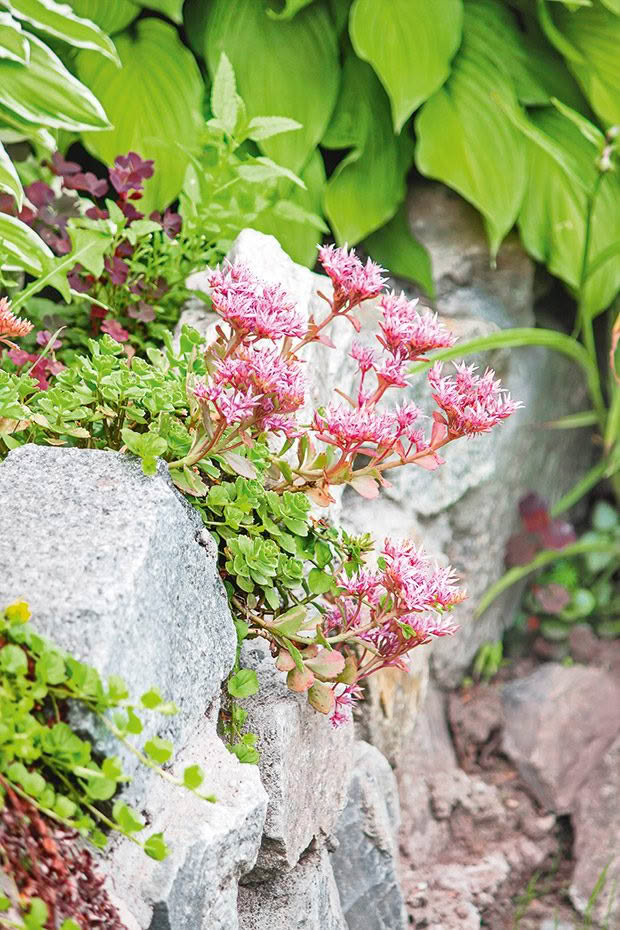
The summer sizzle is on its way, and these under-utilised plants love it.
Words: Jenny Somervell
Water is already a scarce summer resource for many gardeners. One of the best plants for these conditions are sedums. Some creeping sedum varieties seem to defy all odds, growing where no other plant will.
They happily colonise cracks in garden walls, shingle, gravel, and underneath massive trees, growing and prospering where grass won’t.
READ MORE: 5 creeping sedums to fill in a drought-tolerant garden

These little saviours are also time-savers. They conveniently fill difficult sites, which would otherwise grow weeds. However, there is more to sedums than filling dry spots.
4 WAYS TO KEEP SEDUMS HAPPY
If you can find a well-drained, sunny-ish spot in your garden, you have a place for sedums. There is a sedum for any situation: stone walls, containers, weed suppression, challenging dry spots, tricky hillsides.
1. Most sedums like five or more hours of direct sunlight a day, the exception being highly variegated varieties, which need dappled light to avoid sunburn.
2. Many sedums come from rocky slopes or deserts – they prefer poor lean soils, but the key to them doing well is good drainage.
3. Too much moisture or standing in water will quickly kill sedums – avoid low-lying sites in favour of slopes or slight inclines.
4. If soil is heavy, add sand, gravel, or similar coarse material; organic matter will improve drainage and aeration.
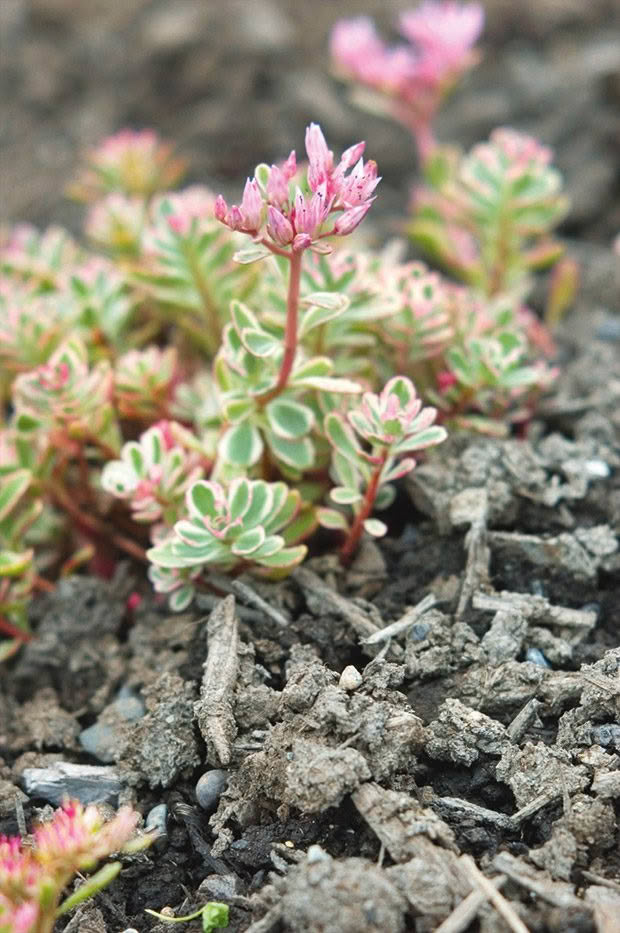
WHY SEDUMS CAN LIVE IN THE DRIEST PLACES
Some sedums have adapted to dry conditions by using crassulacean acid metabolism (CAM) photosynthesis.
Most plants lose water through stomates, tiny breathing pores on the leaves. These open during the day using a process called evapotranspiration.
But some sedums, and other plants like cacti, only open them at night, to conserve water.
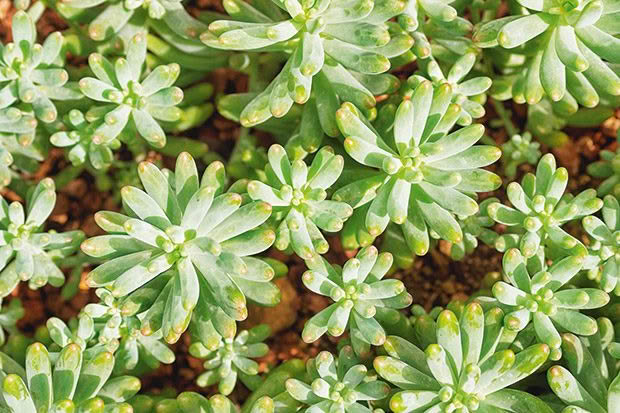
Plants that are drought-resistant share similar traits, including thick succulent foliage, like the ‘jellybean’ sedums.
Sedums for very dry spots:
Sedum adolphii (tender)
S. allanoides
S. dendroideum (tree sedum)
S. x rubrotinctum cultivars (coloured form of the jellybean plant)
S. lucidum
5 REASONS TO LOVE SEDUMS
Design-wise, they tick all the boxes, offering options in form, texture and colour from over 400 versatile species:
1. They can be prostrate, creeping, pendulous, upright, arching or draping;
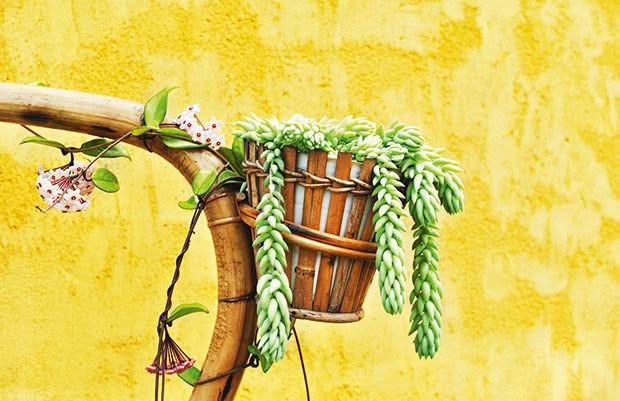
2. Textures range from fine and needle-like in the carpeting varieties, through to thick, dense, and bold in the upright forms;
3. There is a wide colour selection, in flowers and foliage, with dramatic purples, blues, silver to gray-greens, golds, and variegated options;
4. They look great in containers or pots, thriving on neglect – skive off on a summer holiday, without organising a waterer, and they will be the only plants still standing when you come back;
5. Sedums are very easy to propagate: cut off or pull up a piece of stem and lay on top of potting mix or insert a short depth into soil. Once established, they will need very little water to thrive.
BORDER SEDUMS
Hylotelephium sp are larger, upright-growing varieties. Plants are drought-tolerant but will be larger and flower
more if watered regularly in spring and summer. They die back to a ground-level rosette in winter.
The stout, upright, 35-90cm stems have fleshy, succulent, bluish or grayish-green leaves. These sedums show off with spectacular clusters of richly-coloured flowers in mid-summer to autumn; their common name is ‘autumn sedums’.
Hylotelephium spectabile
This is arguably the star of the genus. Flowers in mid-summer-autumn with large bold clusters of bright florets, like a flashy head of broccoli. Colours range from pale lilac to pink to brick-red. The dried flower heads persist into winter as the plant dies back, drying to a cinnamon brown.
JENNY’S RECOMMENDATIONS
1. Autumn Joy (Hylotelephium spectabile)
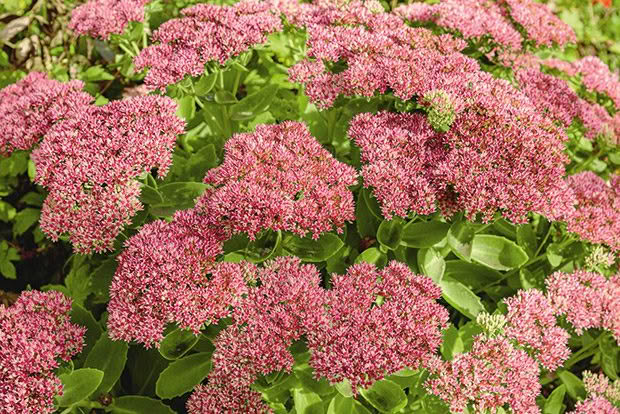
2. Purple Emperor (Hylotelephium spectabile)
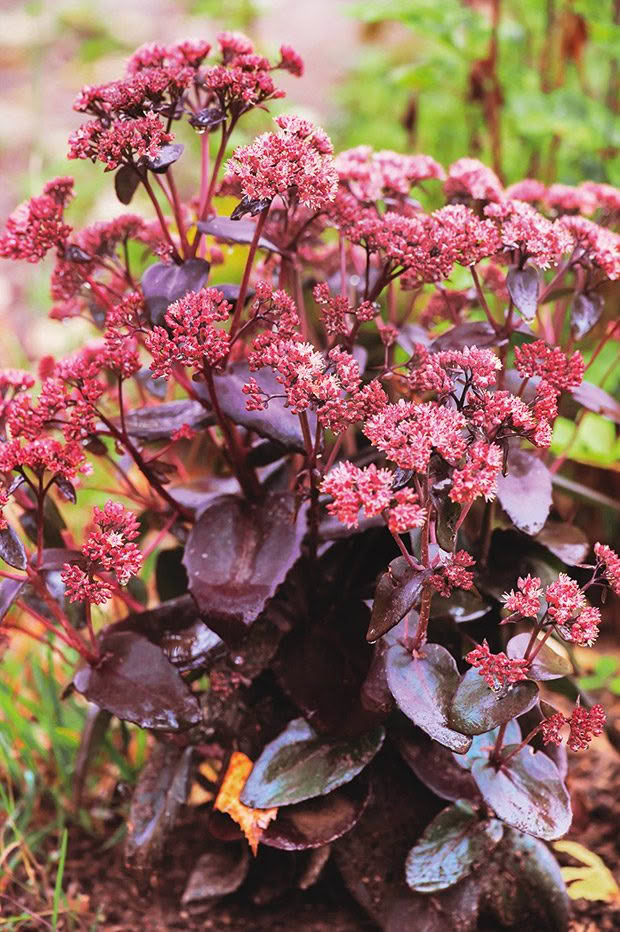
3. October daphne (Hylotelephium sieboldii)
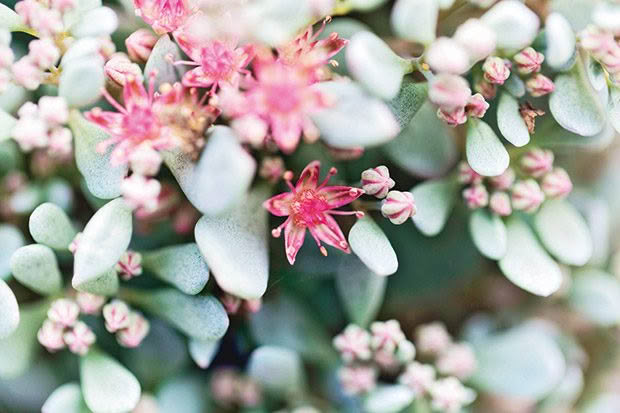
Doesn’t begin flowering until mid-autumn. The cooler autumn temperatures turn the leaves an attractive pinkish-purple or reddish blush. The striking pink flowers work well with white, yellow, rich purple and blue flowers, or foliage in shades of green, yellow, blue, deep purple, gray,
and silver.
4. Sedums that last all year

Most Hylotelephium are the stars of autumn, but some have four-season appeal. Their clustered flower buds are interesting long before they open. Many have colourful foliage. Even after flowering, its drying heads keep it looking attractive through winter.
H. spectabile Purple Emperor and H. telephium ssp maximum Atropurpureum start off with purple-tinged blue-grey foliage in spring. By summer-autumn, foliage is a deep purple to reddish-purple. They finish with rosy pink flowersin autumn.
READ MORE
How to plant, grow and nurture sedum plants (the plant that grows against all odds)
Creative ways with succulents PLUS how to propagate succulents for free
Love this story? Subscribe now!
 This article first appeared in NZ Lifestyle Block Magazine.
This article first appeared in NZ Lifestyle Block Magazine.
